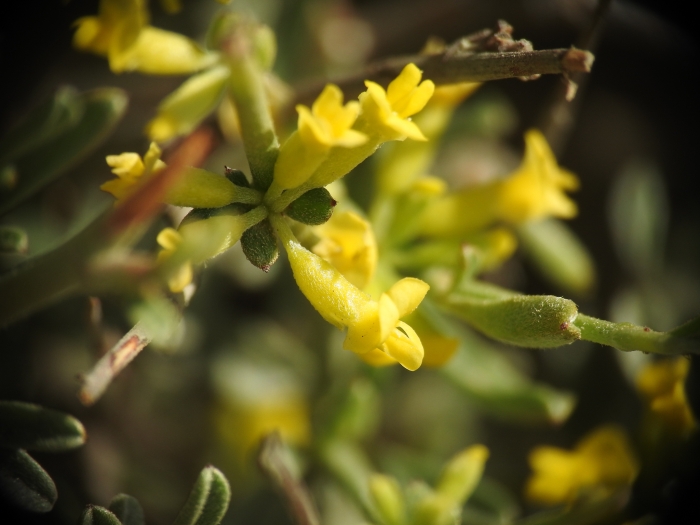Lavender-Leaved Anthyllis
(Anthyllis hermanniae)
Lavender-Leaved Anthyllis (Anthyllis hermanniae)
/
/

Yves Bas
CC BY 4.0
Image By:
Yves Bas
Recorded By:
Copyright:
CC BY 4.0
Copyright Notice:
Photo by: Yves Bas | License Type: CC BY 4.0 | License URL: http://creativecommons.org/licenses/by/4.0/ | Rights Holder: Yves Bas | Publisher: iNaturalist | Date Created: 2022-05-04T09:57:21-07:00 |

























Estimated Native Range
Summary
Anthyllis hermanniae, commonly known as lavender-leaved anthyllis, is a low-growing perennial shrub native to rocky, well-drained slopes and coastal areas in the Mediterranean region, including Anatolia, Greece, the Balkans, and islands such as Corsica. It typically reaches a height of 1.5-2 feet with a similar spread and has a distinctive growth habit with zig-zagging branches. The trifoliate leaves are covered in soft, silky hairs, giving them a silver-gray appearance. From late spring to early summer, it produces clusters of bright yellow, pea-like flowers that are moderately showy.
Lavender-leaved anthyllis is valued for its drought tolerance and ability to thrive in poor, rocky soils, making it an excellent choice for rock gardens, xeriscaping, and coastal plantings. It requires minimal maintenance once established and is often used as ground cover or in borders. For optimal growth, it should be planted in full sun and does not tolerate waterlogged conditions. While generally disease-free, it can suffer from root rot if overwatered. This plant is not known for aggressive roots or invasiveness, but it may not tolerate harsh winters well.CC BY-SA 4.0
Lavender-leaved anthyllis is valued for its drought tolerance and ability to thrive in poor, rocky soils, making it an excellent choice for rock gardens, xeriscaping, and coastal plantings. It requires minimal maintenance once established and is often used as ground cover or in borders. For optimal growth, it should be planted in full sun and does not tolerate waterlogged conditions. While generally disease-free, it can suffer from root rot if overwatered. This plant is not known for aggressive roots or invasiveness, but it may not tolerate harsh winters well.CC BY-SA 4.0
Plant Description
- Plant Type: Shrub
- Height: 1-2 feet
- Width: 1-2 feet
- Growth Rate: Moderate
- Flower Color: Yellow
- Flowering Season: Spring, Summer
- Leaf Retention: Deciduous, Semi-deciduous
Growth Requirements
- Sun: Full Sun
- Water: Low
- Drainage: Medium, Fast
Common Uses
Border Plant, Butterfly Garden, Drought Tolerant, Low Maintenance, Rock Garden, Showy Flowers
Natural Habitat
Rocky, well-drained slopes and coastal areas in the Mediterranean region
Other Names
Common Names: Hermann’s Anthyllis
Scientific Names: , Anthyllis hermanniae, Aspalathoides hermanniae, Zenopogon herrmanniae,
GBIF Accepted Name: